Hidden inside of a long, 27-page Alaska Air Group Investor Presentation came some interesting insights and plans from the Seattle-based airline planning to acquire Hawaiian Airlines over the next 12 to 18 months.
Many of you have been wondering and asked us about the interisland fleet that is, in essence, Hawaii’s bus system between islands. And the presentation gave us somewhat surprising insight into just where Alaska may be headed in that area.
Boeing 737 MAX as replacement for 19 aircraft, Boeing 717 interisland fleet.
The current fleet is seriously showing its age, with visible wear and tear. We flew to and from Honolulu yesterday again and couldn’t help but notice the plane looked very well-worn, to be kind. And that’s just what passengers can see. The plane we once thought was a marvel when flying on it a quarter century ago, now feels like very old airliner technology.
Alaska will move forward with a 717 interisland fleet replacement relatively quickly. When they do, the plane they would likely be planning for is the Boeing 737 MAX 7. That plane, the smallest of the MAX line, together with the MAX 10, is awaiting certification for flight, which is likely to occur in 2024. The 737 MAX 7 is somewhat larger than the current 717 fleet, and can carry up to about 150 passengers, depending on configuration.
Alternatively, Alaska could deploy older 737 planes, of which it owns many, to Hawaii. As an aside, Alaska also has a fleet of Embraer 175 jets. That would have caused us to ponder whether an E-JET solution wasn’t more likely. But based on this document at least, it appears that isn’t the case.
Alaska Airlines is an all-Boeing company again.
After recently jettisoning the legacy A321neo fleet that Alaska obtained through its purchase of Virgin America, Alaska returned to being an all-Boeing plane company. So it came as no real surprise that on page 18 of the report, Alaska stated (we believe erroneously) that the fleet has nearly half its cycle time remaining. If that were the case, then Hawaiian would not have been moving forward towards a previously indicated 2025 decision on replacement. But more importantly than that, the report stated the 717 fleet “could eventually be replaced by 737.” Fascinating.
Why does the fleet need replacing and what seemed astray in Alaska’s report.
In the realm of Hawaii aviation, the age and flight cycles of planes is a noteworthy topic. Both aircraft flight hours and the number of take-offs and landings (cycles), are essential elements in assessing a plane’s overall condition.
In Hawaii, the larger planes covering longer distances generally accumulate more flight hours but fewer cycles. Conversely, planes dedicated to shorter interisland flights, such as the Boeing 717, experience higher cycles due to the frequent take-offs and landings. We’ve been told that the 717’s can perform 12 or more cycles per day. A plane that’s 25 years old flying 12 cycles per day would have already amassed 109,500 cycles. Originally, we were told that the planes were built for a typical service life of 60,000 cycles. That being said, the life can be extended significantly by a variety of factors including maintenance, operating conditions, and modifications.
Boeing 717: The Workhorse of the Pacific for a quarter century.
Among the notable aircraft in Hawaii’s fleet, the Boeing 717s stand out for their remarkable service history. With most in operation for twenty to twenty-five years, these planes boast significant flight cycles. Notably, two planes, N488HA and 489HA, have reached 25 years of service, and exemplify the endurance of these aircraft.
As a passenger fleet, the Hawaiian Boeing 717s represent some of the highest flight cycles globally. Pilots have lauded the aircraft’s capabilities, with one Hawaiian captain expressing confidence that the 717 could continue flying indefinitely.
Rigorous Maintenance and Safety
Despite the age of these plans, Hawaiian Airlines maintains a robust reputation for safety. With almost a century of flight experience and no major incidents since 1929, the airline’s maintenance programs ensure the safety and airworthiness of its planes. Routine inspections, maintenance checks, and defined retirement criteria are part of these programs, allowing airlines to extend the service life of their aircraft.
The Future of Hawaiian Airlines’ Fleet
Anticipating the retirement of the Boeing 717 fleet, Hawaiian was close to revealing its choice for replacement and had been expected to announce a decision in the near future. Things happened, however, that prevented that development. First, the cost of a new fleet, which could be $50 to $100 million per plane, was extreme in relation to circumstances in which Hawaiian finds itself. Then the acquisition by Alaska Airlines, completely derailed any thoughts of fleet replacement.
Hat tip to reader Mitch.
Alaska-Airlines-Announcement-Presentation-1Get Breaking Hawaii Travel News
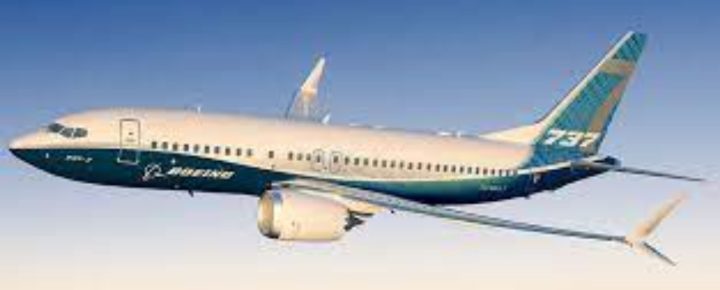
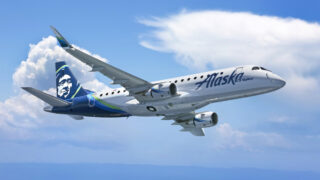
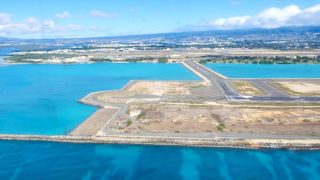
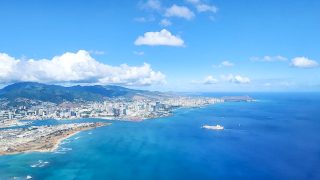

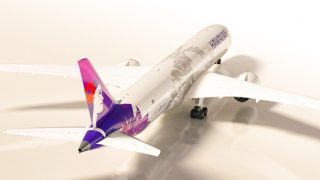
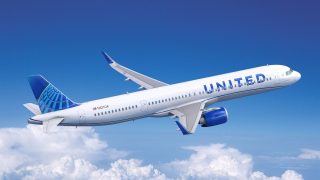
Instead of 3×3 seating on the yuck 737s the e175 s. would be much more comfortable
Good news. Much better than a regional jet from Airbus or Embraer. Quieter too. That said I really like the current 717’s so I hope we see them for a bit longer.
The comment the 717 has half of its life remaining is questionable as you say. The 717 is a tough airplane, perfect for interisland flying, there is not a plane made today better than the 717 for that type of flying. Boeing has extended the life of the airframe with engineering analysis multiple times, it was overbuilt by MD. The 2025 decision was 3-5 year lead time afterward. What I took from the presentation is that they like that the aircraft are owned and that the 737 will likely replace the 717 eventually, but not “relatively quickly” as you surmise. I think the timeline will be about the same as Hawaiian had planned. The 175 would need about 65% more planes (and gates) to do the same as the 717 passenger and cargo.
If Hawaiian had a healthy balance sheet they’d already replaced their aging 717 fleet.
I give credit to Hawaiians CEO’s recognition that Hawaiian wasn’t going to survive in it’s current format. The logical thing to do was to sell to Alaska.
We all should be happy that there’s a plan to replace these aging workhorses with newer aircraft.
Hi Richard.
You and JC both make good points. Thanks.
Aloha.
Hawaiian would br bankrupt if Alaska hadn’t bought them. There was noway for them to replace all 717 and other planes.
Do not expect the deal with Amazon to remain intact as is. AirBus cargo aircraft can be replaced with 767-300F for much less money
or even the 777-300F and keep the all Boeing Fleet that AL likes
If it ant Boeing we ant going. Regardless of the Alaska take over of Hawaiian, the 737MAX-7 seems to be a very good option for HAL Inter Island fleet. The only question is can the GE LEAP jet engines perform the hot and quick turnarounds so vital to Hawaiian Inter Island operations. The much improved thrust to weight of 737MAX will allow safe operations from all airports on all eight islands. So this should allow Moloka’i and Lanai to be served by Hawaiian/Alaska Airlines jet aircraft like back in the day.
It might be more cost effective to cycle Alaskan’s older 737s through through the HA interisland routes. That would make effective use of their older but still viable birds and replace them with MAX’s to expand and fly other, longer haul routes.
In a sane world, there would be far fewer aircraft flying interisland and far more modern, very high speed ferries servicing all but the farthest island destinations such as Kona and Hilo. But I digress when I referenced “sane” 😀 Return of the Super Ferry anyone?
Best Regards
Alaska’s announcement of the 737 replacing the 717 might be a temporary fix, not a final decision. Analyzing their 2024 order book and Embraer’s potential deals will be key to predicting the true replacement. Here’s why:
-Placeholder possibility: The 737 might fill a gap until a better option emerges. Alaska’s silence on long-term plans suggests they’re open to other aircraft.
-Embraer’s tempting offer: Horizon could use Embraer jets for Hawaii and the Northwest, maximizing their lifespan and potentially making it the frontrunner.
-A321 shuffle: Selling the A321s as the 737 MAX takes over could be a quick cash grab for Alaska.
Ultimately, Alaska’s next move will reveal its true replacement strategy.
Hawaiian current CBA wouldn’t allow Horizon flight between the island. I expect that provision will be in the new JCBA so whatever plane they use will be piloted by Hawaiian mainline pilots
THis would be a very bad idea. The MAX is not safe, plain and simple. If Alaska went this route, many passengers would look elsewhere to fly interisland. I hope Empire Airlines comes back to the islands and flies their C408 Sky Courier inner-island. That would make a lot of sense as that aircraft is designed for that type of flying. If they start flying the MAX inner-island, we may have another Aloha accident on our hands in short time. If anything, Alaska should ferry over some E-175’s for the short inner-island flying
Well, tell us how you really feel! You know the old saying about opinions…
If this acquisition goes through, you’ll see AS move quickly to go back to a “Proudly All Boeing” airline just like they did with VX. The 737MAX as an interisland platform, gives AS/HA the ability to use those on thinner mainland markets when they want to expand routes, like BUR or SNA. Don’t be surprised if you see the A321Neo fleet disappear over the next 5 years especially since they’ve had so many engine problems. The MAX10 will be out by then and it could easily replace the Airbuses. The A330’s have probably seen their last extension to leases as, AS will push for more 787’s. The agreement with Amazon though will see the A330 freighters stick around.
Agree…makes total sense for the passenger operation of Alaska/Hawaiian be all 737/787 eventually ….the Cargo operation (with it’s option to go to 60 A-330’s) remain an Airbus freighter operation….Hawaiians simulator operation in HNL is another added benefit to Alaska. 787/330 and NEO sims that they can use for their own pilots and make a nice profit doing contract work for other carriers.
I sure hope not. Alaska’s CEo has said that both airlines will remain separate. I hope this will remain true and that the fleets won’t be thinned. The A321 and A330 have been great aircraft to fly on between the mainland and Hawaii. Once the 787 replace the A330 fleet, I would hope the A321’s would remain in service. I’d love for Alaska to come out and say that getting rid of the ex VA A321’s was a big mistake in light of this recent news.